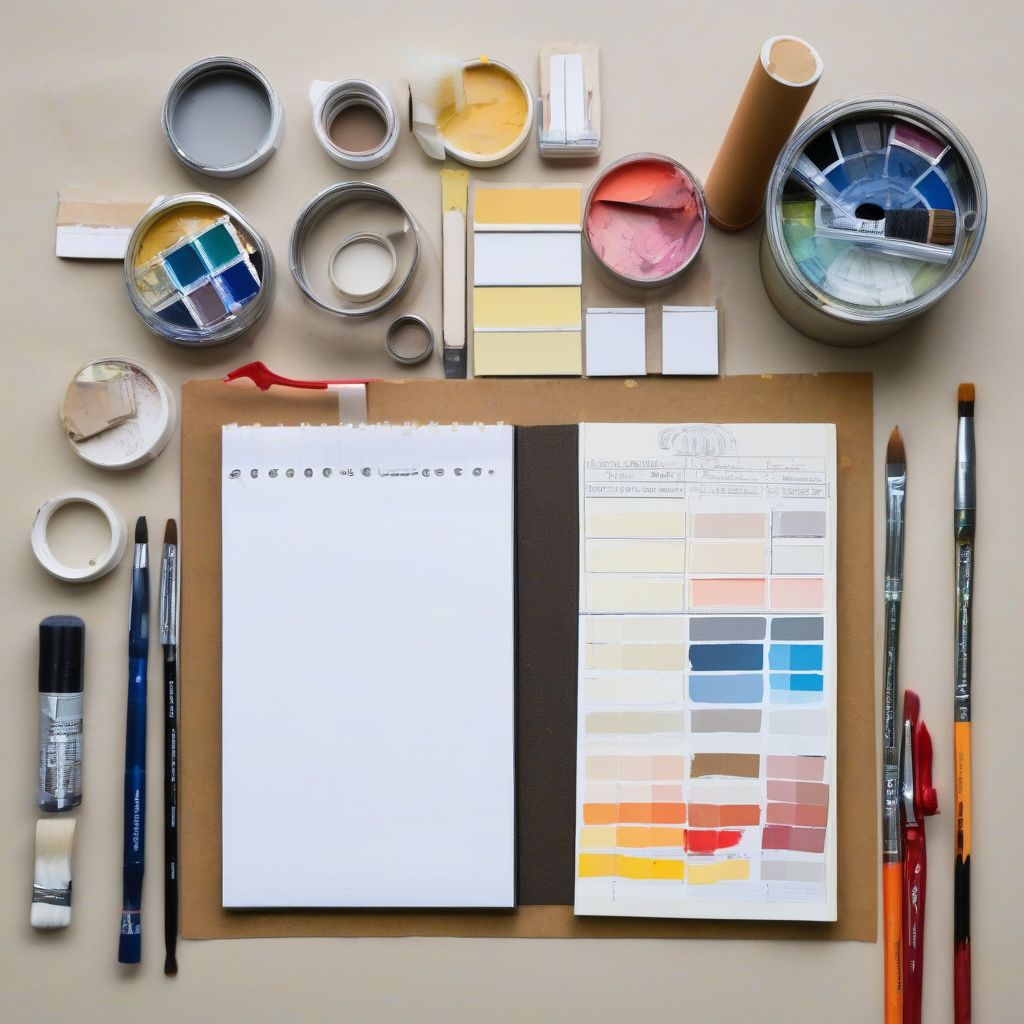Have you ever walked into a friend’s home and been amazed by a beautifully crafted bookshelf or a one-of-a-kind planter? You think to yourself, “I wish I could make something like that!” Well, guess what? You absolutely can! DIY projects aren’t just for seasoned crafters; they’re for everyone. Whether you’re a complete novice or have dabbled in a bit of everything, this guide will equip you with the tools and knowledge to confidently tackle your first (or next) DIY project. Let’s dive in and unleash your inner maker!
Planning Your DIY Project: The Foundation for Success
Just like a nutritious meal requires a good recipe, a successful DIY project starts with a solid plan.
1. Choose a Beginner-Friendly Project:
Starting with a manageable project boosts your confidence and sets you up for success. Consider these options:
- Upcycling old furniture: Give an old chair a fresh coat of paint or transform a worn-out table with some stylish decoupage.
- Creating simple home decor: Design a macrame wall hanging, paint a colorful canvas, or arrange a unique succulent planter.
- Crafting practical items: Sew a tote bag, make homemade candles, or build a wooden birdhouse.
2. Define Your Project Scope:
Clearly outline what you want to achieve. Ask yourself:
- What exactly are you making?
- What materials will you need?
- What skills are required?
3. Set a Realistic Budget:
DIY doesn’t have to break the bank! Determine how much you’re willing to spend and explore cost-effective options like:
- Upcycling or repurposing materials: Breathe new life into old jars, fabric scraps, or wood pallets.
- Shopping at thrift stores or online marketplaces: Discover hidden treasures and affordable supplies.
4. Create a Timeline:
Break your project into smaller, manageable tasks and set realistic deadlines. This prevents feeling overwhelmed and helps you stay on track.
 DIY Project Planning
DIY Project Planning
Gathering Your DIY Toolkit: Essential Supplies for Beginners
Every DIY enthusiast needs a reliable set of tools. Here are some must-haves for beginners:
Basic Toolkit:
- Measuring Tape: Accurate measurements are crucial for successful DIY projects.
- Hammer: Perfect for driving nails and assembling wooden structures.
- Screwdrivers (Phillips and Flathead): Essential for projects involving screws.
- Scissors: Useful for cutting fabric, paper, and other materials.
- Utility Knife: Ideal for precision cutting and trimming.
- Pliers: Handy for gripping, bending, and cutting wire or small objects.
- Level: Ensures your projects are straight and balanced.
- Sandpaper (Assorted Grits): Smooths rough edges and prepares surfaces for painting or finishing.
- Paint Brushes (Various Sizes): Apply paint, stain, or glue evenly.
Additional Supplies:
- Wood Glue: Bonds wood pieces together securely.
- Painters Tape: Creates crisp, clean lines when painting.
- Safety Gear: Protect yourself with safety glasses, gloves, and a dust mask.
Pro Tip: Invest in quality tools that will last.
Mastering Basic DIY Techniques: Skills to Get You Started
Don’t be intimidated by DIY jargon or techniques. Here are some fundamental skills to master:
1. Measuring and Marking:
Accurate measurements are crucial. Use a measuring tape and a pencil or marker to mark your materials precisely.
2. Cutting and Sawing:
Learn how to use a utility knife, scissors, or a saw to cut materials cleanly and safely. Practice on scrap pieces first.
3. Sanding and Painting:
Sanding creates a smooth surface for painting or staining. Apply paint evenly using a brush or roller, and allow proper drying time between coats.
4. Assembling and Joining:
Learn basic joinery techniques like using nails, screws, or glue to assemble your project. Use wood glue for a strong bond and clamps to hold pieces together while drying.
Finding DIY Inspiration: Resources for Your Creative Journey
Inspiration for your DIY projects is everywhere!
Online Resources:
- Pinterest: A visual search engine brimming with DIY ideas and tutorials.
- YouTube: Discover step-by-step video tutorials for countless projects.
- DIY Blogs and Websites: Many websites are dedicated to providing DIY inspiration and guidance.
Offline Inspiration:
- Home Decor Magazines: Find trendy ideas and stylish designs.
- Thrift Stores and Flea Markets: Uncover unique items to upcycle or repurpose.
- Nature: Draw inspiration from natural textures, colors, and patterns.
Pro Tip: Save your favorite DIY ideas on Pinterest boards or in a dedicated folder for easy reference.
Common DIY Mistakes and How to Avoid Them
Even experienced DIYers make mistakes. Here are some common pitfalls to avoid:
- Skipping the Planning Stage: Planning may seem tedious, but it’s crucial for a successful project.
- Not Reading Instructions Carefully: Take your time to understand the steps involved before you begin.
- Using the Wrong Tools or Materials: Using the correct tools and materials ensures the best results.
- Rushing the Process: Enjoy the process and don’t rush.
- Being Afraid to Ask for Help: Don’t hesitate to seek assistance from experienced DIYers or professionals.
Conclusion
Embarking on your first DIY journey can be incredibly rewarding. It’s a chance to unleash your creativity, learn new skills, and create something truly unique with your own two hands. Remember to start small, plan meticulously, equip yourself with the right tools, and don’t be afraid to seek inspiration and guidance along the way. Embrace the learning process, enjoy the journey, and most importantly, have fun bringing your DIY dreams to life!
Now that you’re armed with these tips and tricks, it’s time to roll up your sleeves and get started on your first project. What will you create?
No products found.
